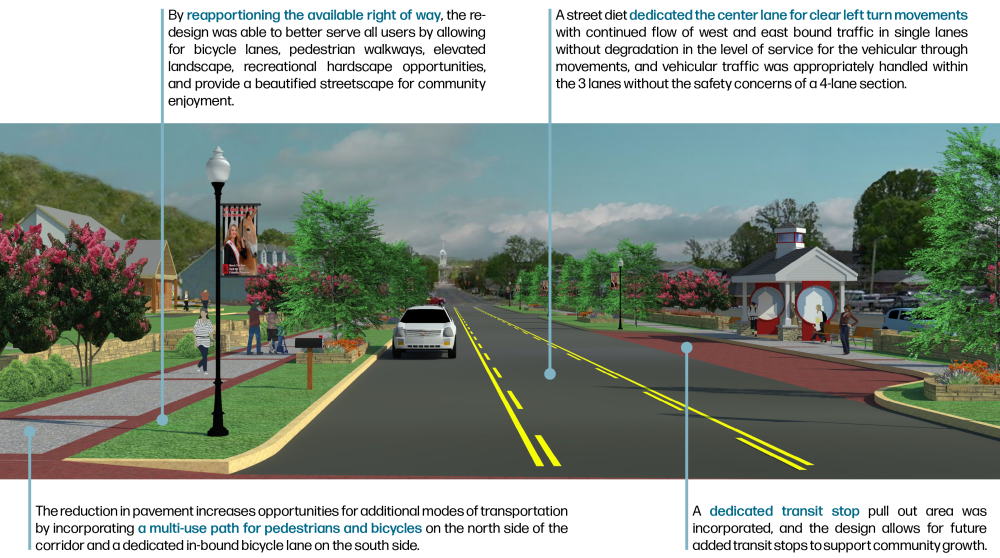"Promoting and supporting future growth through a beautified and functional streetscape."

Columbia, TN
The gateway to Columbia's historic district.
The goal of the Columbia West 7th Street project was to improve pedestrian and vehicular safety while also creating a beautified entryway to downtown Columbia, Tennessee, that promotes multimodal principles, historic interpretation, safe pedestrian routes, and economic development through creation of a sense of place and cohesive design. The complexity of the Columbia West 7th Street project was multifaceted and RaganSmith worked closely with the City of Columbia while coordinating with the Tennessee Department of Transportation (TDOT), utility companies, and key community stakeholders.
RaganSmith served as the project manager, grant writer, and project engineer, providing additional services for land surveying, land planning, and landscape design. The completion of the project brings to fruition the City leaders’ desire for a beautiful, safe, multimodal complete street that serves as the showcase route for all major civic events, leaving tourists and residents alike with great impressions of the City of Columbia.
Street Diet
Previously, in the 4-lane corridor, the two middle lanes were acting as de facto left turn lanes and tended to interlock during peak traffic hours. Those left turn movements caused traffic delays and congestion by bogging down travel lanes. A street diet dedicated the center lane for clear left turn movements without decreasing the flow of traffic in the single lanes, improving circulation without the safety concerns of a 4-lane section.
The reduction in pavement provided opportunities for additional modes of transportation by incorporating a multi-use path for pedestrians and bicycles on the north side of the corridor and a dedicated in-bound bicycle lane on the south side. A dedicated transit stop pull off area was incorporated, and the design allows for future added transit stops to support community growth. By reapportioning the available right of way, the re-design was able to better serve all users by allowing for bicycle lanes, pedestrian walkways, elevated landscape, recreational hardscape opportunities, and provide a beautified streetscape for community enjoyment.

Utility Relocation
The City of Columbia decided to relocate the existing overhead utilities underground, and RaganSmith worked to restructure the entire overhead utility line into an underground utility conduit bank in an urban renewal approach. This transformed the view shed of the project, which was critically important to beautifying this historical roadway that leads to the City Capital Building, traverses a historic district, and travels directly in front of a national landmark, the James K. Polk Building.

Environmental Considerations
Due to the national landmark on the project and the location of the corridor through a historical district, a NEPA analysis was necessary to ensure the project did not have adverse impacts to the cultural and environmental resources within the corridor. Establishing a beautified and functional streetscape that improved the environmental quality of the corridor was a main goal for this project. By reducing the amount of street asphalt and increasing green space, overall air and water quality was improved.



